Summary
- Magnetism
- Vector cross products
- Biot-Savart law
- Loop of current

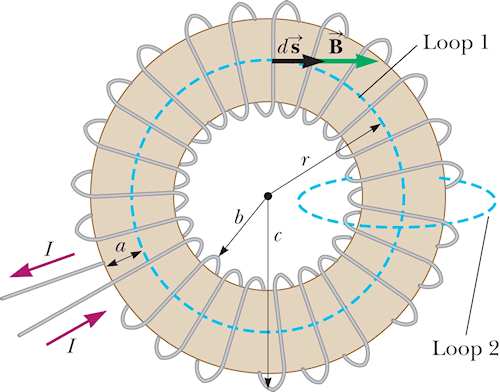
Video review part 1
- electric flux
- Gauss's law
- magnetic flux
Video review part 2
- Oersted experiment - current and B
- B for wire, solenoid, toroid
- force between two wires
- Ampere's law
End of material on Exam II
Exam II
- Bring a calculator (no mobile devices allowed) and
your prepared 8-½×11 reference sheet
- 6 true/false questions (12 pts)
- 6 multiple-choice questions (18 pts)
- 3 free-response questions, each with multiple parts (70 pts)
Prepare:
Read textbook sections 30-1 and 30-2 before the next lecture.
Knight2 33.cq.12a
The figure shows a current-carrying wire passing between two bar magnets. Is there a force on the
wire? If so, in what direction? If not, why not?

A. Yes ... upward
B. Yes ... to the right
C. Yes ... downward
D. Yes ... to the left
E. No, because B is perpendicular to I
F. No, because B = 0 at the wire
Answer
POP5 Ex22.8
A long, straight wire of radius R = 3.00 mm carries a steady current
I = 10.0 A that is
uniformly distributed through the cross-section of the wire. Calculate the magnetic field a distance
r = 2.00 mm from the center of the wire.
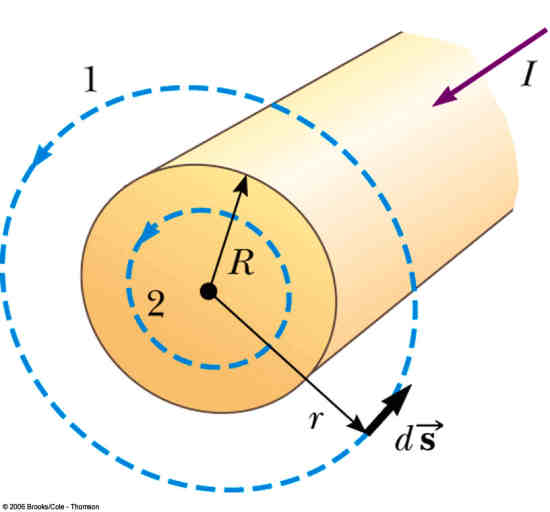
A. 1.00 mT
B. 173 µ
C. 887 nT
D. 444 µT
Answer
POP5 22.54
Four long, parallel conductors carry equal currents of I = 5.00 A. What is the magnitude and
direction of the field at point P?
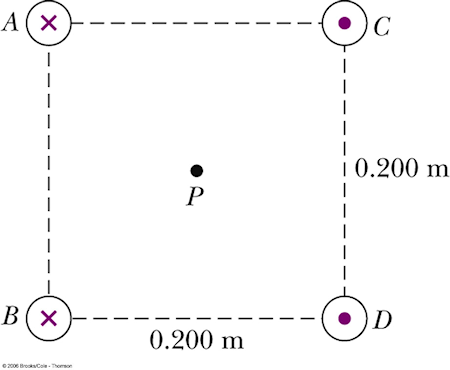
A. 28.3 µT down and left
B. 28.3 µT down and right
C. 20.0 µT downward
D. 20.0 µT upward
Answer
POP5 22.49
A toroid of inner and outer radii of 0.70 m and 1.30 m has 900 turns of wire that carry 14.0 kA.
What is the maximum magnetic field inside?
A. 0.611 T
B. 1.64 T
C. 1.94 T
D. 3.60 T
Answer
C. Yes ... downward
The current is into the page, while the magnetic field is toward
the right (out of the north pole and into the south pole). Use the right hand rule to find that
the magnetic force per unit length
I × B points downward.
D. 444 µT

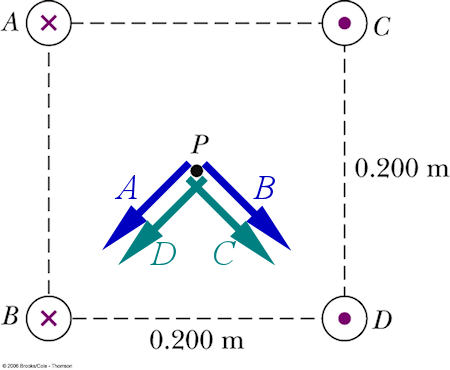
C. 20.0 µT downward
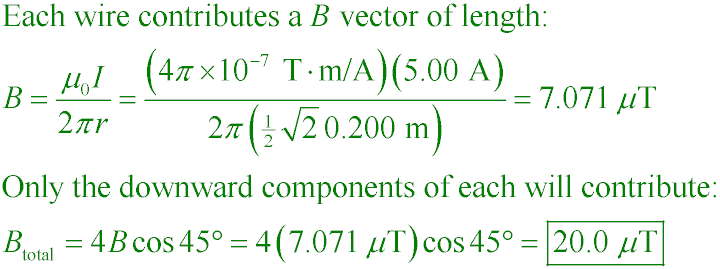
7

D. 3.60 T
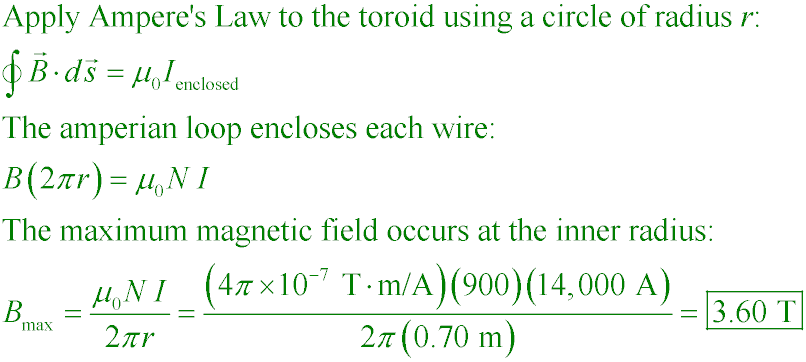




 Example #3
Example #3


 Example #3
Example #3









